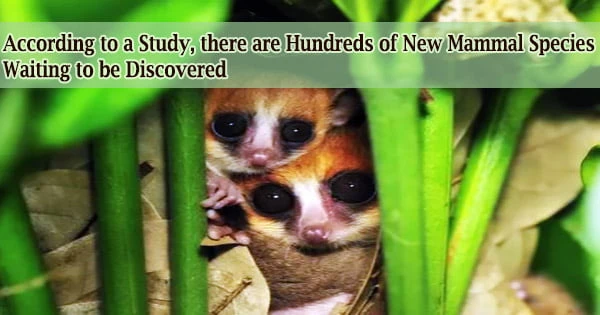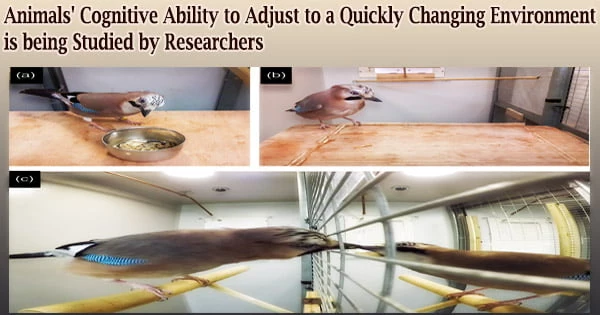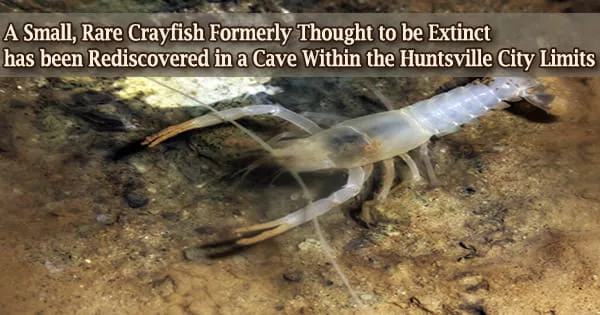According to a new study, hundreds of previously unknown mammalian species are hiding in plain sight all around the planet. The majority of the concealed mammals discovered by researchers are small mammals, including bats, mice, shrews, and moles.
According to study co-author Bryan Carstens, a professor of evolution, ecology, and organismal biology at The Ohio State University, “these unknown mammals are hidden in plain sight partly because they are small and look so much like known animals that biologists have not been able to recognize they are actually a different species.”
“Small, subtle differences in appearance are harder to notice when you’re looking at a tiny animal that weighs 10 grams than when you’re looking at something that is human-sized,” Carstens said.
“You can’t tell they are different species unless you do a genetic analysis.”
The study was published in the Proceedings of the National Academy of Sciences today (March 28, 2022).
The team, led by Ohio State graduate student Danielle Parsons, analyzed millions of publicly available gene sequences from 4,310 mammal species, as well as data on where the animals live, their environment, life history, and other relevant information, using a supercomputer and machine-learning techniques.
They were able to create a predictive model to determine the taxa of mammals that are most likely to include hidden species as a result of this.
“Based on our analysis, a conservative estimate would be that there are hundreds of species of mammals worldwide that have yet to be identified,” Carstens said.
That finding, in itself, would not be surprising to biologists, he said. Only an estimated 1 to 10% of Earth’s species have been formally described by researchers.
“What we did that was new was predict where these new species are most likely to be found,” Carstens said.
The shocking thing is that mammals are very well described compared to beetles or ants or other types of animals. We know a lot more about mammals than many other animals because they tend to be larger and are more closely related to humans, which makes them more interesting to us.
Bryan Carstens
Unidentified species are most likely to be found in small-bodied animal families, such as bats and rodents, according to the findings.
A community is a place where a variety of species coexist in the same space. In a community with diverse organisms in the same place, such as animals, birds, microorganisms, and so on, there will be species variety. The growth of a community has a form and structure.
Hidden species, according to the researchers’ hypothesis, are more likely to be discovered in species with larger geographic ranges and greater temperature and precipitation variability.
The community can be studied in several major growth forms such as herbs, shrubs, and so on. It determines a community’s structural pattern. According to dominance, a specific group of species has a significant amount of control over the community’s lesser species.
Many of the undiscovered species are also likely to be found in tropical rain forests, which is unsurprising given that most mammal species are found there.
However, many unnamed species are likely to exist in the United States, according to Carstens. Some of them have been identified by his laboratory. Carstens and his then-graduate student Ariadna Morales, for example, released a paper in 2018 demonstrating that the little brown bat, which is distributed throughout much of North America, is actually five separate species.
That study also revealed a crucial reason for the need of identifying new species. One of the newly circumscribed bats has an extremely limited range, living just around the Great Basin in Nevada, making its protection all the more important.
“That knowledge is important to people who are doing conservation work. We can’t protect a species if we don’t know that it exists. As soon as we name something as a species, that matters in a lot of legal and other ways,” Carstens said.
Carstens thinks that over 80% of mammal species worldwide have been recognized based on the findings of this study.
“The shocking thing is that mammals are very well described compared to beetles or ants or other types of animals,” he said.
“We know a lot more about mammals than many other animals because they tend to be larger and are more closely related to humans, which makes them more interesting to us.”
The National Science Foundation and the Ohio Supercomputer Center funded the research. Tara Pelletier, an assistant professor of biology at Radford University, and Ohio State graduate students Jamin Wieringa and Drew Duckett were also co-authors.
















